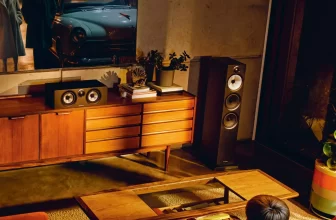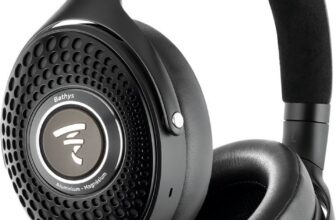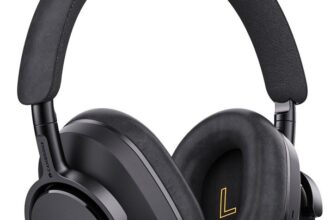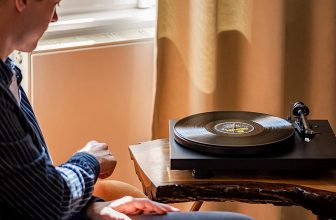Moon by Simaudio Neo 230HAD Amp/DAC Review
Like the rest of us, headphones have dreams and aspirations. They know they have to start out small with whatever phone, computer, or AVR comes to hand. But they dream of something better—of an amp and DAC tailored just for their needs. In short, they long for their dream home. If you’ve invested in a good pair of headphones, wouldn’t it be cruel to make your cans sleep on a sofabed in a basement when they deserve more headroom, more purity, the freedom to be the best they can be? The Moon by Simaudio Neo 230HAD just might be the dream home they’re hoping for.
The More Affordable Neo
Moon by Simaudio is the brand name of a Quebec-based company founded in 1980 as Sima Electronics and now known as Simaudio. It boasts a substantial range of Canadian-made products including stereo integrated amps, power amps, preamps, phono preamps, streaming players, and even a disc transport. Our home theater oriented readers may be interested in the MC-8 power amp, configurable for two to seven channels. Moon has its own streaming and music library technology, called MiND (MOON Intelligent Network Device). And its Neo series includes two headphone amp/DACs.
The one reviewed here, the Neo 230HAD, is the smaller sibling of the Neo 430HA. The 230HAD is single-ended, while the 430HA is a fully balanced differential design. The step-up model offers a balanced headphone input, more output power, and selectable gain. But other specs, connectivity, and format support are the same or similar. The company says the 230HAD offers about 80 percent of the top model’s performance at about a third of the cost.
The Neo 230HAD’s matte black metal enclosure feels substantial when you unpack it. It has a narrow but long form factor decorated with the dressy Moon logo. Under the hood, this is a pure analog amplifier except for the DAC section. The large toroidal power supply boasts eight stages of DC voltage regulation. The company recommends keeping the amp powered up. There is a small heat vent at top right; I left the unit running for days, and it never got more than faintly warm.
On the front are a volume knob, silver standby and input buttons, a quarter-inch headphone output, analog minijack input, and two columns of red LEDs serving as input and sampling rate indicators—the latter indicating sampling rates as 44.1 or 48 kilohertz or multiples thereof. Other amp/DAC manufacturers also do this. It requires a little extra study, but if you’re dedicated enough to know what 384 kHz means, you probably won’t mind that it lights up the 48 kHz, 2X, and 4X LEDs.
The back panel contains the all-important USB input, the only one to support sampling rates of 384 and 352.8 kHz (as rare as unicorns among music downloads available to consumers). The other digital inputs—two coaxial and one optical—support up to 192 kHz and 24 bits. Also present are an RCA analog input and both variable and fixed analog outputs. The variableout enables this unit to serve as stereo preamp when paired with a stereo power amp; the fixed-out feeds a line-level signal to another system. The full-size 32-button remote can also control other Moon components.
My trusty Lenovo Win 7 media PC fed the Moon’s USB input following the usual driver installation. Headphones included the HiFiMan Edition X, Sennheiser HD600, Sony MDR-V6, and NAD VISO HP50.
The test tracks, as usual, ascended from lossy to CD quality to high-res. The MP3s were Bert Jansch, “Back Home,” When the Circus Comes to Town (192 kbps); XTC, “Senses Working Overtime,” English Settlement (192 kbps); and David Bowie, title track, Space Oddity (320 kbps). The CD-quality tracks, all ripped in Apple Lossless, were Leon Rosselson, “Conversation on a Mobile,” A Proper State; Richard Thompson, “Beatnik Walking,” Still; and Steely Dan, “FM,” Gold. The high-res FLAC tracks were Stevie Wonder, “Visions,” Innervisions (96/24), Dave Brubeck Quartet, “Blue Rondo à la Turk,” Time Out (176.4/24), “Jeux de vagues,” the middle movement of Debussy’s La Mer, performed by Charles Munch and the Boston Symphony Orchestra (176.4/24); and “Ben’s Farm in Vermont,” a movement from David Chesky’s The Zephyrtine: A Ballet Story, which also appears on Dr. Chesky’s Headphone Demonstration Disc (192/24).
Neo and HiFiMan
The Neo 230HAD is the bestsounding headphone amp/DAC I’ve ever heard, though I should add that my frame of reference is wider at lower price points. It was, to my ears, tonally neutral, with a tight, unexaggerated bass, a fully realized midrange, and plenty of top-end nuance and air. The solidity of imaging and reliable fidelity of tone color struck me from the first few seconds of the first demo. I always felt I was getting all the resolution and no additive noise. The Neo simply had no bad qualities; there was nothing about the sound that I would change. It made every set of headphones I tried—to quote my own lead—“the best they can be.” I got to hear each of them in a new and better way. I used only a small fraction of the available gain, even with the slightly more demanding Sennheiser, though my headphone collection doesn’t contain anything extremely inefficient. (For the record, our first sample didn’t work and suffered out of the box from some odd hum issues; thanks to Herb Reichert of our sister pub Stereophile for the sub-loan in a pinch of his review unit.)
Paired with HiFiMan’s planar headphones, the Neo mined more musical feeling from MP3s than I thought possible.
The voice of the late Bert Jansch was so palpably alive between my ears, like a ghost come back to life, that it startled me, and the lush choral vocals were no less lifelike. As the XTC track ramped up dynamically, I was surprised at how explosive the prominently mixed drums were. In Bowie’s space opera, Rick Wakeman’s quasi-orchestral mellotron parts constantly shifted in timbre (something the other headphones missed). Moving up to CD-quality tracks, Leon Rosselson’s acoustic guitar and nasal vocal were starkly realistic, while Richard Thompson’s multitracked acoustic guitars and vocals were more sumptuous.
But the Neo/HiFiMan combo was at its best with the high-res tracks. The Stevie Wonder song overlaps the vocal, electric piano, lead guitar, and bass in the center, flanked by acoustic guitars at the sides. I could hear each of the four center elements—all mixed low except for the voice— distinctly and simultaneously, an imaging tour de force. To say that the Debussy orchestral movement was smooth, deep, and warm doesn’t convey the feeling of closing my eyes and being almost forcibly thrust into the recording venue. In the brief Chesky ballet piece, high-frequencyrich percussion instruments not only chimed sweetly but were more firmly anchored in acoustic ambience than I’ve ever heard. My only reservations about the Neo/HiFiMan partnership was that, despite its fine bass, it was too analytical to perfectly convey the relaxed, swinging grooves of the Steely Dan and Dave Brubeck tracks. But other headphones later got the grooves right.
Neo and Sennheiser, Sony, NAD
If I hadn’t been spoiled by Neo/HiFiMan, Neo/Sennheiser probably would have seemed like a revelation. Where HiFiMan was brilliantly organized, Sennheiser was merely tidy. The Jansch vocal went from ghost between my ears back to recorded music. Through Sennheiser’s smaller diaphragms, XTC’s rhythm section didn’t kick my butt. In the Bowie track, the Sennheiser’s more reserved upper midrange prized comfort over detail, which was more than a fair trade in the mellotron parts, though I missed the vibrancy of the pieced-together vocal parts. The Sennheiser also subdued the starkness of Rosselson’s voice and guitar, improving comfort. The relaxed grooves of the Thompson, Steely Dan, and Brubeck tracks all picked up steam with the shift from the hyper-resolved HiFiMan to the politer Sennheiser. However, the Debussy and Chesky orchestral pieces lost some of their captivating immersiveness.
The Sony headphones, with their emphatic treble, were transformed, as though someone had moved the decimal point on the two-figure street price. Mate the Sony with a top-heavy or noisy amp, and the result can be anything from mild discomfort to wholesale slaughter. But the Neo/Sony team was clean, zingy, fun, even questing. Bert’s chorus leaped up to caress his lead vocal, XTC regained its thunderous drums, Debussy’s orchestral tone colors were richer, Chesky’s chiming instruments more vibrant. Not all tracks benefited—Bowie’s mellotron got too hot—but Thompson’s multitracked baritone prospered with more detail, and Steely Dan’s strings and vocals stood up well to the Neo/Sony team’s brightening. I’ve never heard the Sony sounding so good.
The Neo was also the best mate I’ve found for the NAD VISO headphones. While not as constantly surprising as the Neo/HiFiMan combo or as sparkling as the Neo/Sony, the Neo/NAD combo produced a full, rich, dark sound that never gave me an uncomfortable moment, and it was far livelier than the NAD with any other amp I’ve plugged it into. All the tracks dominated by voice and acoustic guitar—Jansch, Rosselson, Thompson, Wonder—flowed naturally and irresistibly. The Bowie, always brilliant but sometimes fatiguing, was definitively civilized. I was afraid the Neo and NAD—both of which abhor edginess—would anesthetize the Debussy. Instead they brought it to life with coherent and involving imaging and texture.
The Moon by Simudio Neo 230HAD is a state-of-the-art headphone amp/DAC that is both versatile and reliable. It will make good headphones sound great and great headphones sound extraordinary. I was genuinely sorry to box it up and send it on its way. This is the kind of product I’d gladly live with.
VERDICT
The Moon by Simaudio Neo 230HAD is a state-of-the-art headphone amplifier/DAC that has a healthy, and sometimes transformative, effect on whatever headphones you plug into it.
SPECS
Dimensions (WxHxD, Inches): 7 x 3 x 11 • Weight (Pounds): 5 • Inputs: USB (1), coaxial digital (2), optical digital (1), analog RCA (1), analog mini-jack (1) • Outputs: 1-inch headphone (1), analog RCA (2, fixed and variable) • Maximum Output: 100mW/200mW/1W into 600/300/50 ohms • Compatible Headphone Impedance: 20-600 ohms • Bit Depth/Sampling Rates: 384/32 (USB), 192/24 (other inputs), DSD256 (USB) • Upsampling: PCM to 384/32, DSD native • DAC: ESS ES9018K2M • Windows Drivers Installed: ASIO, Moon USB HD DSD.





